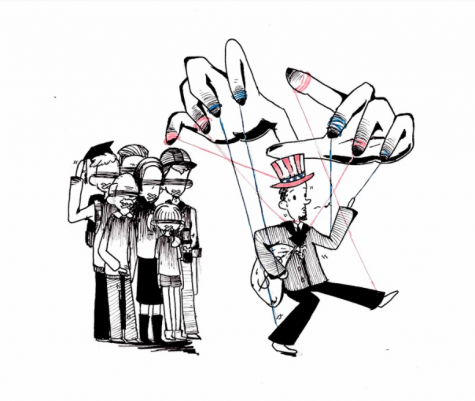Breaking the (terror empathy) barrier
Taking the volume of media coverage as an indicator of terror attacks, it would be fair to assume that the world was destroying itself in an inferno of terror. However, the incidence of terrorism actually decreased worldwide in 2015, increasing only in the West, a region subjected to few terror attacks that garner enormous attention.
The number of fatalities in terror attacks decreased from 43,000 to 38,000 from 2014 to 2015, according to the Global Terrorism Database. Nevertheless, Google Trends shows that in the same period, searches of “terrorism” increased in the United States. This discrepancy can be attributed to the rise in terrorism in the West, where such attacks are relatively rare.
According to New America, only 94 people have been killed by jihadist terrorism in America since 2001. Recent attacks have raised the numbers substantially, but 94 deaths in fifteen years is hardly the apocalyptic disaster portrayed by the media. Every day—for perspective—92 people are murdered or commit suicide using firearms, according to CDC.
Taking the November Paris attack as an example, an Afghan had about a 0.6% chance of being killed by the Taliban, while a Parisian’s chances of being killed in an attack were less than 0.006%. The libertarian Cato Institute estimated that the chance of an American being killed by a terrorist is less than four in one million. None of these statistics preclude society’s fear that America is a prominent target.
To find where terrorism is an existential threat, we must look where terror goes unreported. According to the 2015 Global Terrorism Index, 57% of all attacks and 78% of all deaths occured in only five countries: Iraq, Nigeria, Afghanistan, Pakistan, and Syria. Yet a quick internet search for information about the largest ones—in Qaim, Palmyra, or Kunduz—reveals few results. Each of these events killed over 240 people. Yet the Paris attacks, which rank as only the 23rd deadliest attack of 2015, produced more than 21,000 articles. An analysis by liberal magazine The Nation found that eleven times as many articles are written about per death in attacks in Western regions as those in non-Western ones. The Nation claims this is due to a so-called “empathy gap” between Western and non-Western victims.
Another problem with media coverage of terrorist incidents is Islamophobia and selectivity. Since 2001, 48 people have been killed by far-right terrorists espousing racist, anti-government, or anti-abortion views. These tragedies have received little attention, despite remaining on pace with jihadist terror attacks until the Orlando nightclub shooting in June.
Nevertheless, politicians pontificate upon the dangers of ‘radical Islamic terror’ while downplaying incidents like the Charleston attack as mere ‘hate crimes’ or ‘mass shootings.’ In the aftermath of the Charleston attack, 99% of Google searches used the term ‘shooting,’ rather than ‘attack.’
This terminological distortion creates the narrative that terrorism is committed by jihadists, while right-wing terrorists are only psychiatrically disturbed people who act irrationally. Thus, while Robert Dear, the perpetrator of the Planned Parenthood attack, was held mentally incompetent and will not be prosecuted, jihadists who survive their attacks are justly sentenced to long prison terms.
Terrorism is certainly a problem in the United States, but sensationalist media coverage causes unfounded panic and the false perception of chaos caused by a nationalist dread of the spread of Islam.











